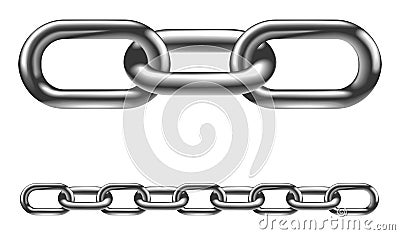 On tutor turnover
On tutor turnover
We have some great things happening in the entry level layer of the tertiary sector. We work with learners who have the high needs and learners who are very demanding. We work with learners who have experienced failure and without our help will repeat those patterns of failure. We work in a tough environment and do it well.
We also have some systemic problems that continue to limit the kinds of success we all want. One of our biggest problems is high tutor turnover. This is compounded by poor organisational knowledge management. In other words, tutors leave often, and when they do, they take large chunks of knowledge and experience with them.
Why is high turnover a problem? Isn't it feeding us new blood?
Schoenfeld's recent work with teachers provides some troubling findings. He found that teachers up until the fourth year of teaching were primarily focused on mastering classroom management. The actual educational gains of students were low, because the teacher was attempting to master the demands of running a class and learning the system.
The next four years of a teachers' career was focused on learning content. They needed to master what they were teaching. Let's call this subject knowledge. Again, the learner gains were very limited. The teacher's attention is split.
The next four years were spent mastering pedagogical knowledge - actual teaching to students.
Consequently, it takes 12 years for a fully trained teacher to begin to teach students really well. And this is with a teaching degree, support and constant PD. Not to mention regular pay rises and a supportive organisation (we assume).
Our sector has about a three year turnover period for tutors. Several years ago it appeared to be less. There is little hard data so this is based on my observations. At the time I asked every group (at workshops) that year how long they had been in their jobs and took note of the results. One quarter had been in their job less than six months (sample was about 1000 tutors) in 2012.
It is not hard to see that tutors are occupied with mastering classroom management, developing content knowledge, and administration knowledge (NZQA, Assessment Tool etc) in their first few years, rather than developing great pedagogical knowledge. To be blunt - Tutors are struggling to get a handle on the job and leave before developing high quality skills. Consequently learners (the most demanding across all spheres of education) are not receiving the quality they require. I don't say this in a judgmental way, I tutored for eight years straight (25 hours face to face contact 49 weeks every year) And STILL struggled.
The turnover erodes learner progress, tutor development and institutional progress.
Why do tutors leave?
I believe the reason tutors leave is two fold: First is the growing discrepancy between their actual work outcomes and the demanded work outcomes. Most tutors enter the sector because they want to help people get more out of life. This is the real reason they are in the job, or at least a large part. This can be called the 'actual' outcome.
Actual tutor outcomes:
- Positively impact people who need support
- Build confidence
- Work with and encourage young people
- Developing real skills that will pay off in the real world
- Minimising negative behaviours and maximising positive ones
- Demonstrate to people what can be achieved

Demanded Organisational outcomes
- NZQA Unit & Credit achievements
- Movement on L&N assessment tool
- Attendance
- Completion rates
- Learner employment
Now I know it is not as easy as all that. But my suspicion is that the tutor role no longer reflects the values that attracted people to the role in the first place. Hence, the downside of the role is no longer equally balanced by the positive side - and people simply leave (actually, the people with options leave). All jobs have aspects that we struggle with, but those tensions are balanced by other positive factors. The tutoring role is out of kilter.
Solutions:

Many years ago during my degree I did a case-study of an organisation that was having difficulty with staff. Upon investigation it was clear that the staff had gotten themselves into a cycle of complaining and this cycle was now self-perpetuating. The staff worked hard and well. But when they got together the conversation always gravitated toward how bad things were getting. Any negative thing that did happen tended to be taken as evidence that the whole organisation was negative. Management was largely absent but because the staff were highly committed they continued to perform at their very best. The management were unaware but the staff as a group were on a downward trajectory.
Long story short, I interviewed staff and came up with some solutions based on some theories I was using (mostly motivational theory). The main solution had to do with the personality, traits and motivational make-up of the tutors. The tutors were short term task oriented, yet highly relational. They were motivated to make a difference for their students - not motivated by money and not by achievement. What did they need most?
Affirmation
I designed a plan based on the make-up of the staff and also drawing on Herzberg's two factor motivation-hygiene theory. To my mind this is one of the most valuable ways of looking at the PTO sector.
Look it up if you don't know it.
As a part of the plan I designed a meeting every two weeks with each staff member. This would I believe have interrupted the cycle. But it had to be personal and face to face. Group rewards were ineffective with this group. For example, a group trip away as a thank you to everyone would not be effective (this turned out to be a hygiene factor rather than a motivational factor). They needed
individual affirmation. It had to be real and specific. Any hint of in-authenticity would blow it. It didn't require money, it required genuine appreciation of a job well done from a senior.
The managers did not do this. They had their reasons. However key staff members dominoed out the door. Once one person left, they all went. I have seen this happen about five times now in the same situation and sector. The organisation then has to recover and this takes time and hurts learners.
Career pathways
The second way to begin to slow down turnover is to do some thinking around progression plans. Tutoring has become a terminal job. That means no pathway of progression. It means anyone with aspirations must leave to get ahead. Anyone who needs to save money must leave to get ahead. As part of an annual review the organisation MUST build in a progression for the tutor.
You can also choose, as many do, to simply let tutors leave and train new ones. But in truth we are kidding ourselves if we think this is a sustainable strategy. This simply places huge strain on the new tutor (see issue one) and on supporting staff. But here is the kicker: The learners will not learn. You may get them through units, but these skills will be gone within 2 months. You may get them jobs (great) but you will not have improved their skills. You may have inducted them into a way of behaving, but you have not improved their skills.
Your organisation needs to be improving every year, year on year on year. You can't do this if organisational knowledge is rolled back to zero every few years.
Tough talk
The pressure will be coming on soon for PTEs to produce 'real' learning outcomes. There is a cull coming (we have already seen the start of it) and those organisations that don't begin the transition to become real education organisations will not make the grade. Mastering the art of moving learners through Unit standards will not be preparation for the next wave. Those credits will have to reflect authentic skills development. That means if you re-assess any learner in 6 months they should easily pass the assessment. Ask yourself, what if you reassessed all your learners right now on the units they have passed, with no teaching or support, would they easily pass the units?
We need professional tutors, who want to do this for a career. This may require an entirely different business model in order for current funding streams to make this possible. I have some ideas - would love to hear others.
Updated:
Graeme Smith has some great thoughts here.


 He concluded that he was only dumb in the maths class. That when it came to maths, he just didn't have it. But being good at maths means you are smart, so being bad at it means..? This was too painful, so he told himself that maths wasn't his 'thing'. He told his mum, "I'm good at sport but not maths. Maths is for geeks anyway'.
He concluded that he was only dumb in the maths class. That when it came to maths, he just didn't have it. But being good at maths means you are smart, so being bad at it means..? This was too painful, so he told himself that maths wasn't his 'thing'. He told his mum, "I'm good at sport but not maths. Maths is for geeks anyway'.
 Number four is a huge advantage to us - balance. The Predator has a big fricken head. His center of gravity is way too high. Should be able to get him off balance quite a bit. A log bridge tied by ropes that you have to walk along as it moves (like at the playgrounds) will cause this guy problems. If his feet move out from directly below him he'll fall over.
Number four is a huge advantage to us - balance. The Predator has a big fricken head. His center of gravity is way too high. Should be able to get him off balance quite a bit. A log bridge tied by ropes that you have to walk along as it moves (like at the playgrounds) will cause this guy problems. If his feet move out from directly below him he'll fall over.  On tutor turnover
On tutor turnover
 Many years ago during my degree I did a case-study of an organisation that was having difficulty with staff. Upon investigation it was clear that the staff had gotten themselves into a cycle of complaining and this cycle was now self-perpetuating. The staff worked hard and well. But when they got together the conversation always gravitated toward how bad things were getting. Any negative thing that did happen tended to be taken as evidence that the whole organisation was negative. Management was largely absent but because the staff were highly committed they continued to perform at their very best. The management were unaware but the staff as a group were on a downward trajectory.
Many years ago during my degree I did a case-study of an organisation that was having difficulty with staff. Upon investigation it was clear that the staff had gotten themselves into a cycle of complaining and this cycle was now self-perpetuating. The staff worked hard and well. But when they got together the conversation always gravitated toward how bad things were getting. Any negative thing that did happen tended to be taken as evidence that the whole organisation was negative. Management was largely absent but because the staff were highly committed they continued to perform at their very best. The management were unaware but the staff as a group were on a downward trajectory. A few weeks ago I began a series about how to get smarter. One of the ways to get smarter is to understand the ways in which your brain limits your ability to solve problems.
A few weeks ago I began a series about how to get smarter. One of the ways to get smarter is to understand the ways in which your brain limits your ability to solve problems. A woman has four pieces of chain. Each piece is made up of three links. She wants to join the pieces into a single closed ring of chain. To open a link costs 2 cents and to close a link costs 3 cents. She has only 15 cents. How does she do it?
A woman has four pieces of chain. Each piece is made up of three links. She wants to join the pieces into a single closed ring of chain. To open a link costs 2 cents and to close a link costs 3 cents. She has only 15 cents. How does she do it? How to win the 3MT!
How to win the 3MT! To win
To win
 Problem
Problem

 A woman has four pieces of chain. Each piece is made up of three links. She wants to join the pieces into a single closed ring of chain. To open a link costs 2 cents and to close a link costs 3 cents. She has only 15 cents. How does she do it?
A woman has four pieces of chain. Each piece is made up of three links. She wants to join the pieces into a single closed ring of chain. To open a link costs 2 cents and to close a link costs 3 cents. She has only 15 cents. How does she do it?